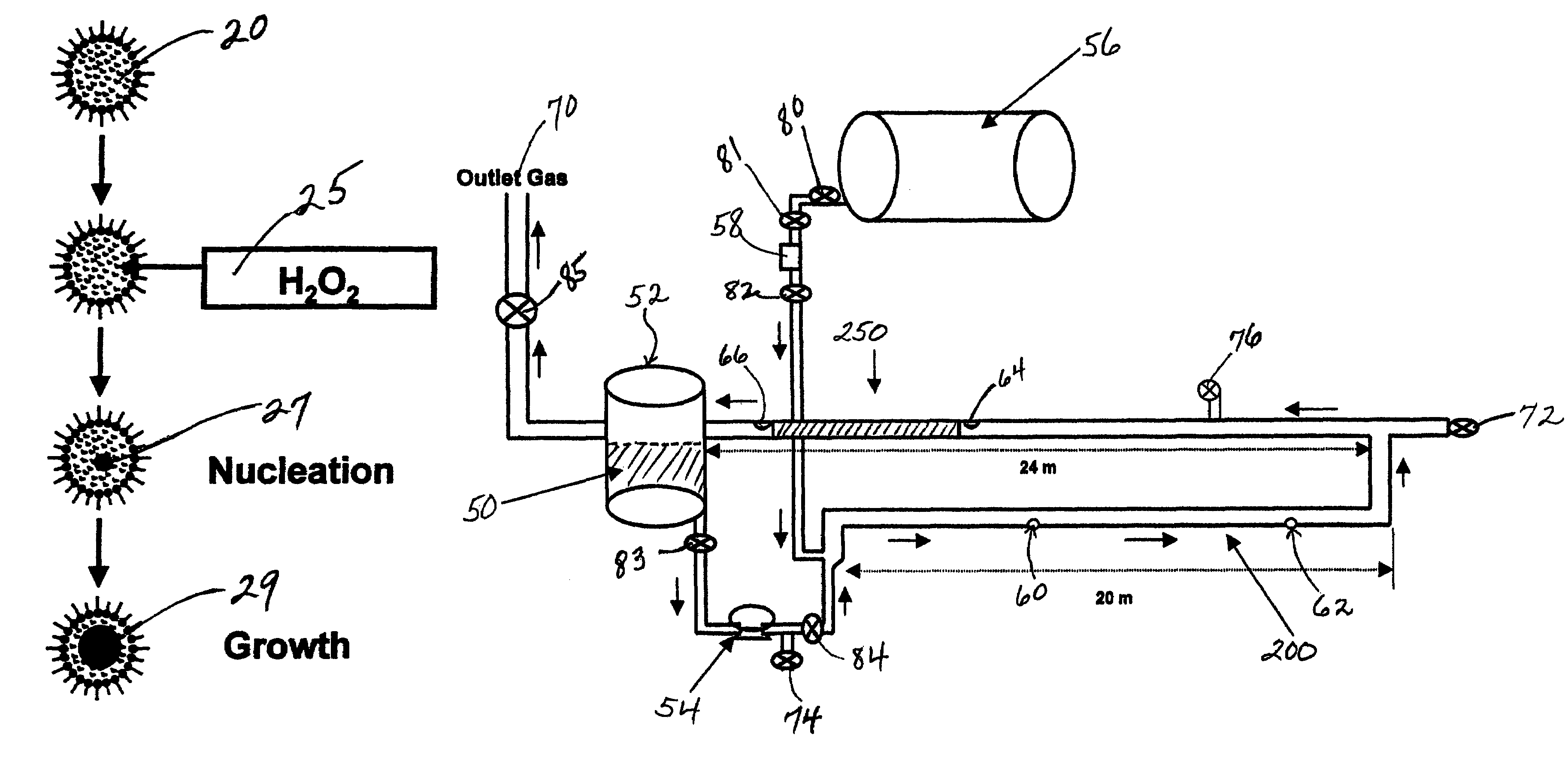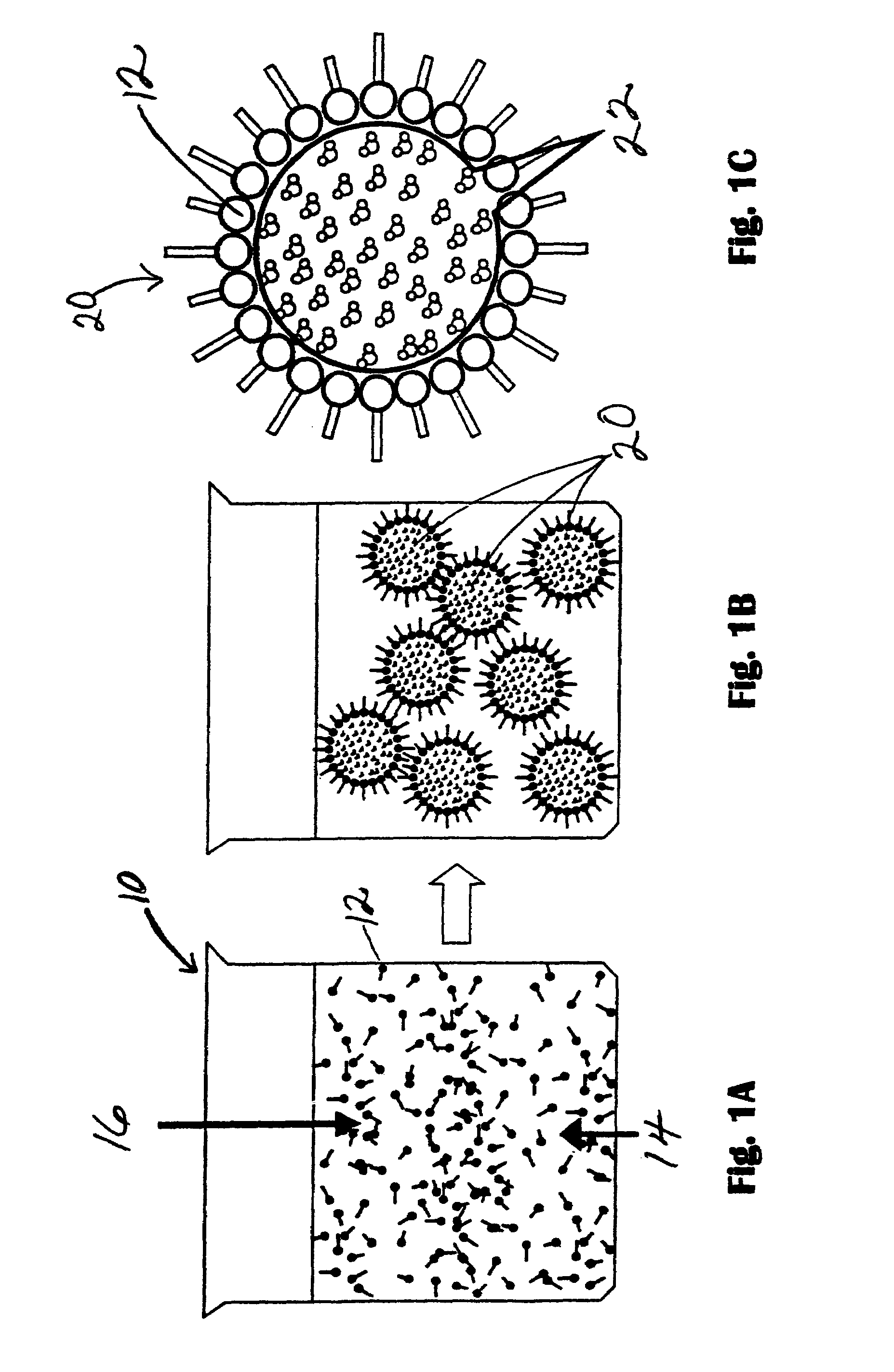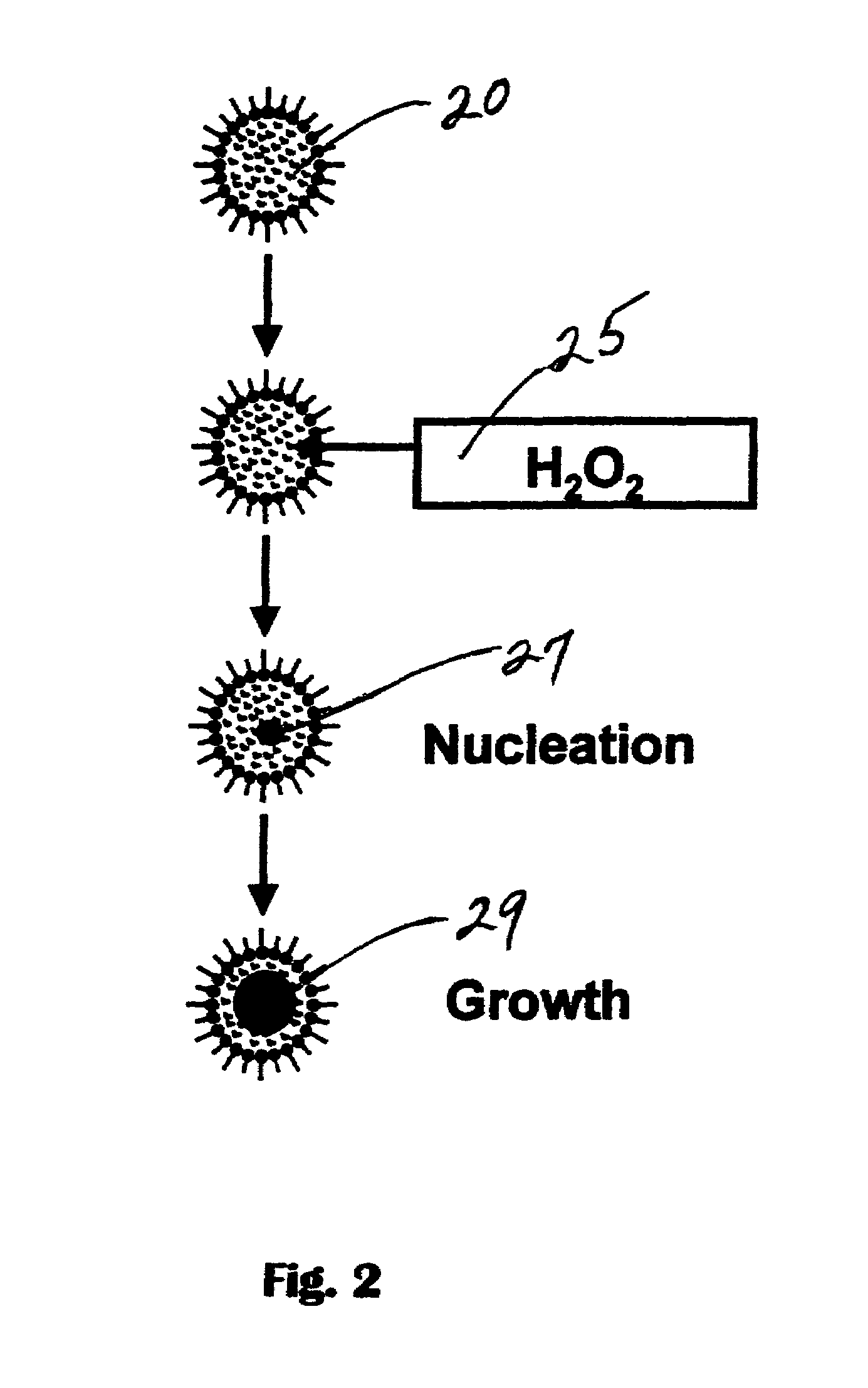Surfactant incorporated nanostructure for pressure drop reduction in oil and gas lines
a technology of oil and gas lines and nanostructures, which is applied in the direction of mechanical equipment, transportation and packaging, oxygen/ozone/oxide/hydroxide, etc., can solve the problems of increasing production costs, increasing the cost and manufacture of the pipe used to convey fluids, and generating substantial pressure drops. , to achieve the effect of reducing the pressure drop generated
- Summary
- Abstract
- Description
- Claims
- Application Information
AI Technical Summary
Benefits of technology
Problems solved by technology
Method used
Image
Examples
example
Preparation of Nano Ceria Mixture
[0040]Cerium oxide nanoparticles of a size approximately 2 nm to approximately 10 nm in diameter, are prepared by a process including the steps of dissolving approximately 0.5 grams to approximately 1.0 grams of Ce(NO3)3.6H2O in deionized water to make approximately 10 mls of solution to form a first solution, followed by dissolving approximately 3 grams to approximately 4 grams of AOT (surfactant) in approximately 200 ml of solvent to form a second solution, followed by combining the first and the second solutions, followed by stirring the combined solutions for approximately 30 minutes, and drop wise adding approximately 30% hydrogen peroxide (H2O2) until the stirred combined solution becomes yellow, and subsequently stirring for approximately 30 minutes to approximately 60 minutes more.
[0041]Thus, aqueous reverse micelles (RMs) form surfactant aggregates in nonpolar solvents that enclose packets of aqueous solution in their interior. The size of t...
PUM
| Property | Measurement | Unit |
|---|---|---|
| diameter | aaaaa | aaaaa |
| size | aaaaa | aaaaa |
| diameter | aaaaa | aaaaa |
Abstract
Description
Claims
Application Information
 Login to View More
Login to View More - R&D
- Intellectual Property
- Life Sciences
- Materials
- Tech Scout
- Unparalleled Data Quality
- Higher Quality Content
- 60% Fewer Hallucinations
Browse by: Latest US Patents, China's latest patents, Technical Efficacy Thesaurus, Application Domain, Technology Topic, Popular Technical Reports.
© 2025 PatSnap. All rights reserved.Legal|Privacy policy|Modern Slavery Act Transparency Statement|Sitemap|About US| Contact US: help@patsnap.com



